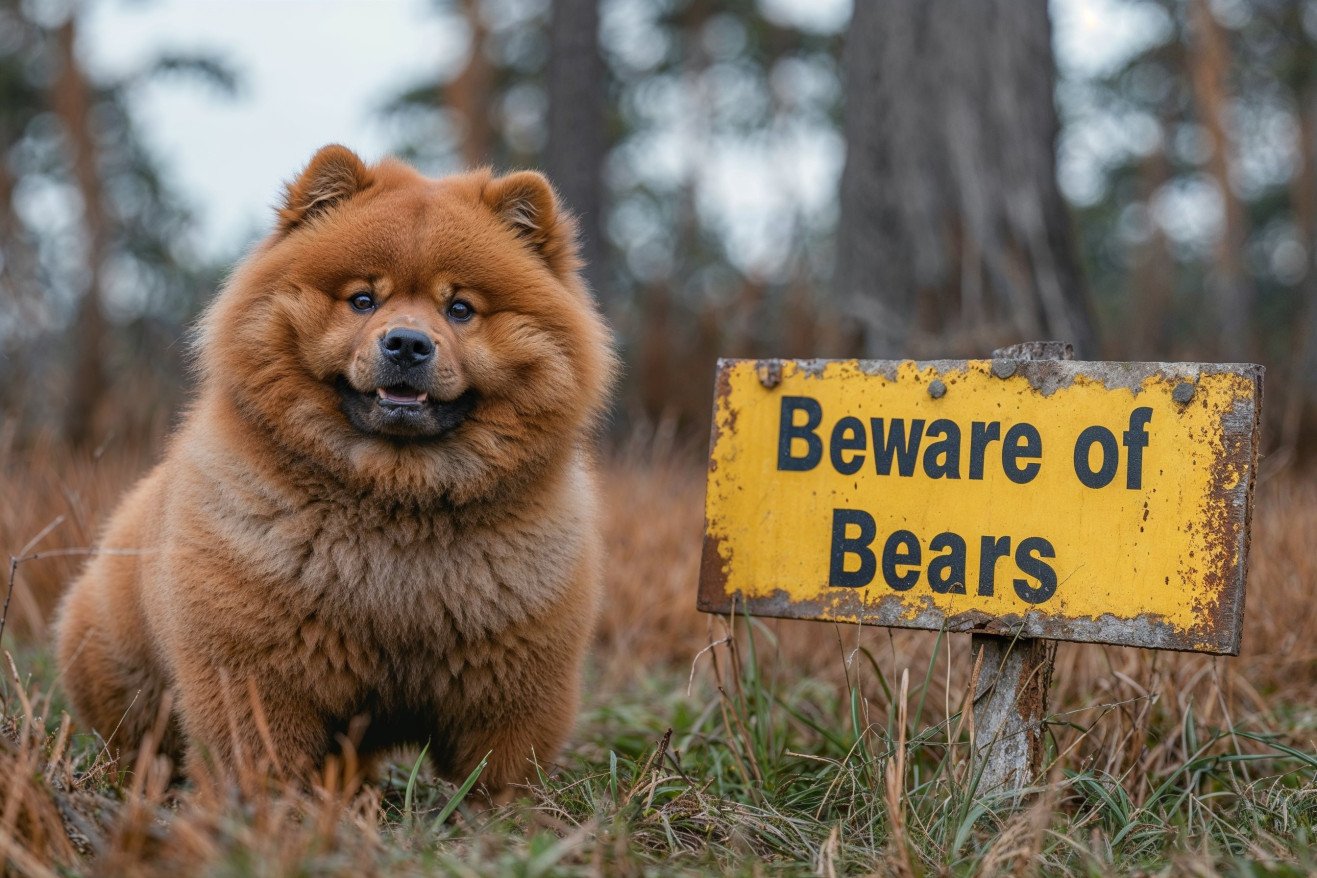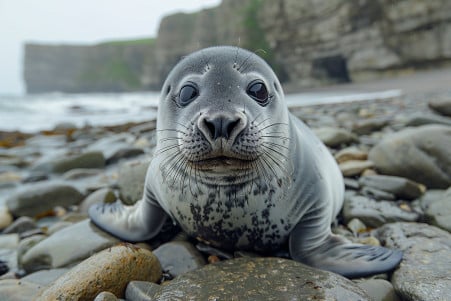Are Bears Big Dogs? The Science Behind This Myth
6 February 2024 • Updated 6 February 2024

When you look at the size and shape of bears, it’s easy to see why some people might think they are just big dogs. But while there are some similarities between the two species, bears are definitely not “just big dogs.”
Not only are they part of different families—Ursidae for bears and Canidae for dogs—but bears are also wild animals with behaviors and ecological roles that are very different from those of domesticated dogs, which have been closely associated with humans for thousands of years.
This article will explore the similarities and differences between bears and dogs from a number of perspectives, including biology, animal behavior, and the history of domestication.
We will look at research in zoology and ethology to understand the scientific basis for the physical and behavioral traits of bears and dogs, and we will also consider an anthropological perspective to understand how humans have interacted with these animals. This comprehensive approach will give you a full picture of these two groups of mammals.
Are bears just big dogs?
Tracing the Lineage: Bears, Dogs, and the Evolutionary Split
The taxonomic hierarchy of the animal kingdom helps to show the evolutionary split between bears and dogs. Bears are part of the family Ursidae and dogs are part of the family Canidae, both of which are part of the order Carnivora, according to the University of California Museum of Paleontology.
This not only shows that both animals have the potential to be carnivorous but also that they split off from each other in the Middle Eocene epoch, according to the University of California Museum of Paleontology.
These two family trees diverged from the same ancestral line, the Miacids, more than 47 million years ago, which were small, carnivorous mammals that are the ancestors of modern carnivores. Bears evolved from this line with 74 chromosomes, while dogs evolved from it with 39 chromosomes, a genetic split that shows just how far apart these two species are.
In addition to these genetic differences, bears have evolved to have stocky builds, non-retractable claws, and long faces, while dogs have evolved to have a more slender build and a digitigrade stance, according to Pawsafe. These differences aren’t just cosmetic but have also evolved to help each species survive in their environments.
As we look at the lineage of these two amazing animals, it’s important to note that their evolutionary history has shaped their behaviors and their roles in their ecosystems, and that history is completely separate from the history of domestication that only dogs have experienced.
From Wolves to Pets: The Domestication History of Dogs
The transition from wild wolf to domesticated dog has been characterized by a range of genetic and behavioral changes that are specific to the process of domestication. According to a 2023 article by Hansen et al., dogs split from their wolf ancestors around 40,000 years ago, and the first evidence of domesticated dogs dates to around 15,000 years ago.
This relationship was able to develop because dogs evolved neoteny, which is the retention of juvenile traits that make them appealing to humans, and an increased tolerance to human proximity—neither of which are present in the undomesticated bear species.
Dogs have been domesticated to have a number of traits that have been selected over generations to meet human needs, including everything from herding to being a pet.
According to National Geographic, selective breeding, which changes an animal’s genetics, is used to create animals that have the traits that humans want, and this is the hallmark of domestication. These changes have not been made in bears, who have continued to live in the wild and avoid human contact.
This domestication has had a significant impact on the way that dogs are used in the world. As a paper by Hansen et al. in PNAS points out, dogs were part of the early human migrations and have adapted to a variety of roles alongside humans, ranging from working animals to emotional support animals.
This is in contrast to bears, which have a solitary, wild existence and have continued to live in the wild, fulfilling their role in the ecosystem without the influence of domestication.
Animal Instincts: How Bears’ Behavior and Ecology Work
As solitary apex predators and important parts of their ecosystems, bears have a number of behaviors that are unique to their species. For example, the International Environment Library Consortium LibGuides explains that brown bears have been known to change their activity patterns to avoid humans, even becoming nocturnal in some cases.
Their territorial ranges are also based on the availability of food and other resources, which is very different from the way domestic dogs have been bred to live in groups and work with humans.
Bears also have a number of ecological impacts, including acting as seed dispersers and nutrient cyclers, which is noted by Western Wildlife Outreach. By foraging, bears help to enrich the soil, promote the growth of plants, and move nutrients around the ecosystem. Grizzly bears also help to control prey populations and impact the biodiversity of their ecosystems, according to research into their biology and behavior.
It’s important to keep bear populations healthy in the face of human expansion. Conservationists are working to protect bears from the loss of their natural habitats and conflicts with humans. Conservation and management plans outlined in PMC stress the importance of maintaining the behaviors that bears have developed over generations, which is important for their survival and their roles in their ecosystems.
This shows the importance of understanding bears as individuals and sets the stage for future research into their cognitive and adaptive abilities.
Inside the Minds of Bears and Dogs: An Intelligence Study
In the animal world, intelligence can be seen in many different ways, from the ability to solve problems to complex forms of communication.
A study from the University of Salford published in Animal Behavior and Cognition found that bears have a high level of cognitive flexibility and persistence when it comes to solving problems.
The study, which was based on a series of cognitive tests involving puzzle boxes, found that brown bears’ big brains play a major role in their ability to be behaviorally flexible, a characteristic that is crucial to their ability to forage in the wild. Meanwhile, a report from the Sierra Club based on the work of Ben Kilham found that black bears have social structures and communication systems that are as complex as those of great apes, which is another sign of their intelligence.
On the other hand, dogs are known for their ability to be trained and to understand human commands, which is a result of their domestication. Over time, humans have shaped dogs’ cognitive abilities to make them more able to understand and interact with people, which means their intelligence has evolved in a way that’s more focused on human needs.
When these two kinds of intelligence are compared, it becomes clear that the intelligence of bears and dogs has evolved to help each species survive in its particular environment. Bears’ ability to solve problems is a result of their lives in the wild, where they live alone, while dogs have become good at reading human cues and signals, which has helped them thrive in their lives with people.
In this way, the animals’ cognitive abilities have been shaped by their environments and their relationships with humans.
As a result, the animals’ cognitive abilities have evolved in a way that’s specific to their species. This not only makes it important to recognize their intelligence, but also to understand the unique roles they play in nature and in human society, and to consider their cultural importance and the way people think about them.
Myth and Media: The Cultural Mosaic of Bears and Dogs
Bears are symbols of strength, bravery, and protection and have a long and diverse history of symbolism in many cultures. According to UniGuide, bears are revered in mythologies around the world, from being powerful medicine beings in Native American spirituality to gods in the Ainu culture of Japan.
In contrast, dogs have been depicted in the media as loyal friends and beloved family members. Fitdog explains that media representations, from Lassie’s heroism to Paris Hilton’s Tinkerbell as a fashion accessory, have had a major impact on the popularity of dog breeds and public perception of them.
Our understanding of bears and dogs, which has been influenced by their cultural symbolism, has led to the idea that bears are essentially ‘big dogs.’ While dogs have been depicted in the media as beloved pets, the National Park Service points out that bears are also part of modern culture but their wild nature and ecological importance are most important.
It is important to understand their different cultural symbolism and meaning in order to appreciate their true nature. Knowing the cultural stories about these animals helps us value their unique place in the world and why it is so important to protect them.
Celebrating the Unique Realms of Bears and Dogs
In conclusion, our exploration has shown that bears and dogs are part of very different branches of the evolutionary tree. From their separate taxonomic families of Ursidae and Canidae to their different evolutionary paths and adaptive features, bears and dogs are not the same. Their behaviors are also very different: dogs have been domesticated to be human companions, while bears remain a symbol of the wild.
Bears demonstrate their wild intelligence through cognitive abilities, such as problem-solving and complex social relationships. Meanwhile, dogs have been bred for at least 15,000 years to understand and communicate with humans, showing their place as domesticated animals that have evolved to live with people.
In order to ensure that both bears and dogs are treated and conserved properly, it is important to recognize the scientific and cultural differences between the two species. By dispelling the myth that bears are ‘just big dogs,’ we highlight the importance of species-specific welfare and conservation strategies.
In recognizing the differences and intrinsic value of each species, we can help people appreciate and respect the unique roles that bears and dogs play in nature and human life, allowing them to thrive for generations to come.


